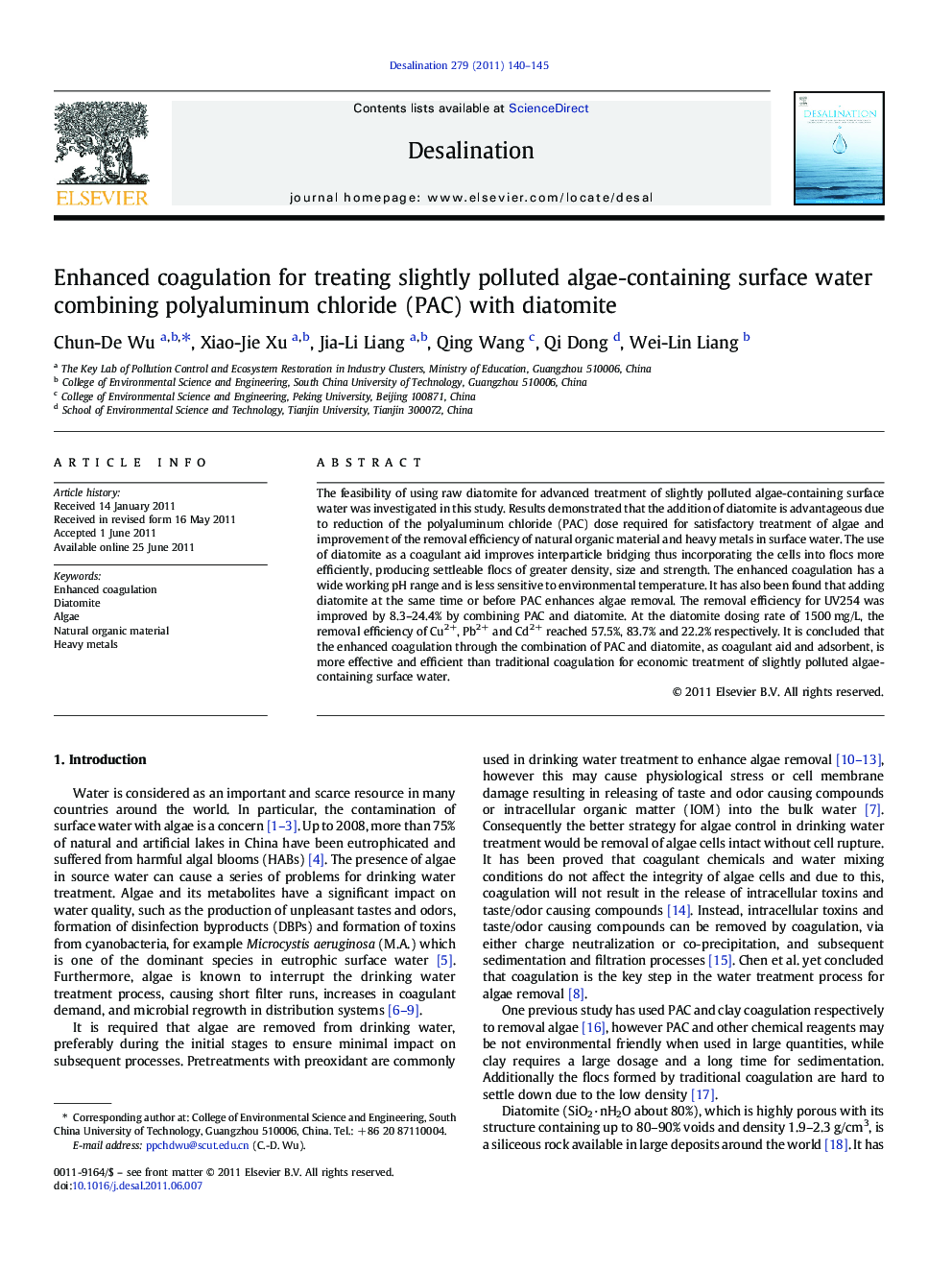| Article ID | Journal | Published Year | Pages | File Type |
|---|---|---|---|---|
| 624894 | Desalination | 2011 | 6 Pages |
The feasibility of using raw diatomite for advanced treatment of slightly polluted algae-containing surface water was investigated in this study. Results demonstrated that the addition of diatomite is advantageous due to reduction of the polyaluminum chloride (PAC) dose required for satisfactory treatment of algae and improvement of the removal efficiency of natural organic material and heavy metals in surface water. The use of diatomite as a coagulant aid improves interparticle bridging thus incorporating the cells into flocs more efficiently, producing settleable flocs of greater density, size and strength. The enhanced coagulation has a wide working pH range and is less sensitive to environmental temperature. It has also been found that adding diatomite at the same time or before PAC enhances algae removal. The removal efficiency for UV254 was improved by 8.3–24.4% by combining PAC and diatomite. At the diatomite dosing rate of 1500 mg/L, the removal efficiency of Cu2+, Pb2+ and Cd2+ reached 57.5%, 83.7% and 22.2% respectively. It is concluded that the enhanced coagulation through the combination of PAC and diatomite, as coagulant aid and adsorbent, is more effective and efficient than traditional coagulation for economic treatment of slightly polluted algae-containing surface water.
Graphical abstractFigure optionsDownload full-size imageDownload as PowerPoint slideResearch highlights► Diatomite could reduce PAC dose required for satisfactory treatment of algae. ► The diatomite as a coagulant aid incorporated the algae cells into flocs more efficiently. ► The flocs were more settleable for its greater density, size and strength. ► The enhanced coagulation was less sensitive to environmental temperature. ► Diatomite improved the removal efficiency of NOM and heavy metals in surface water.
